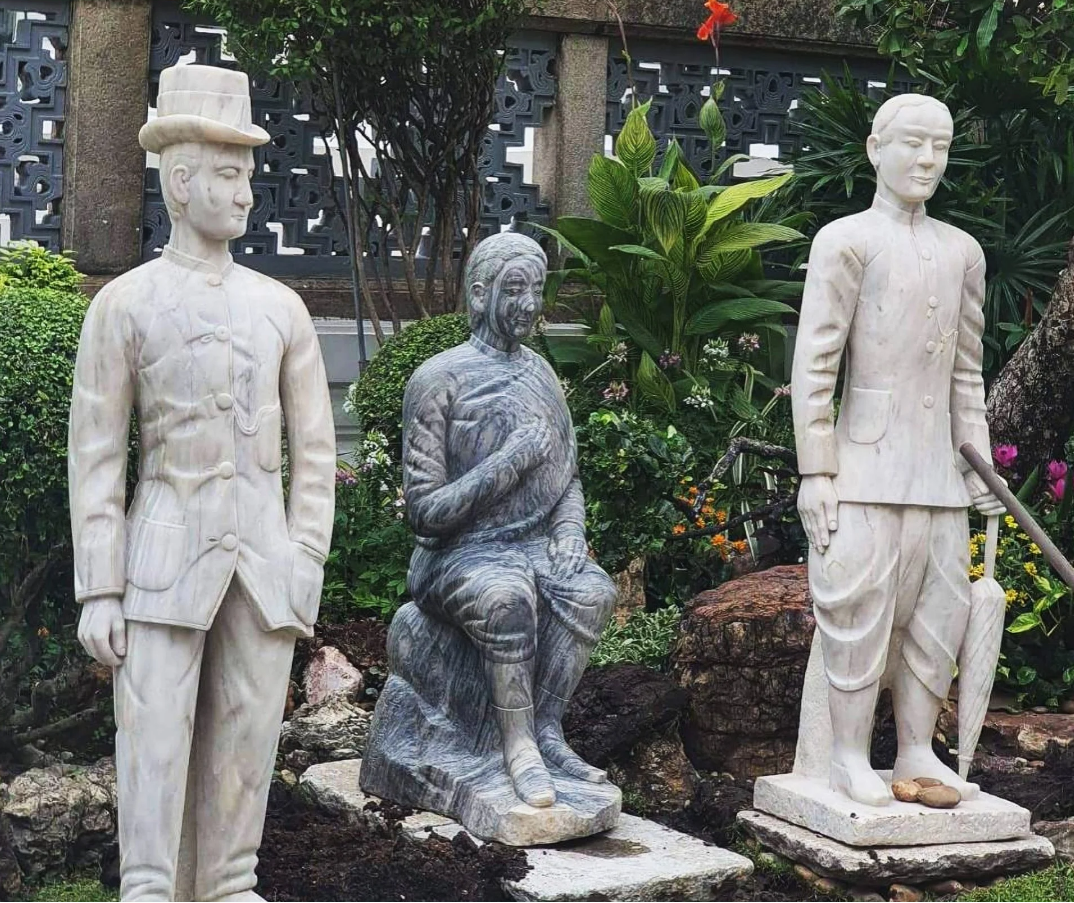The Emerald Buddha Temple of the Grand Palace in Bangkok has recently unearthed a number of cultural relics, with exquisite carvings of stone figures, as many as 130 pieces, and all of them are from China, with a history of more than 100 years. According to the preliminary investigation of experts, the stone statue imported from China during the fifth king's reign to celebrate the centenary of the founding of Bangkok was buried under the Jade Buddha Temple for unknown reasons.
A Thai netizen posted on his Facebook page, surprised to find that there are more than 100 new stone carvings of large and small sizes in the Jade Buddha Temple, these stone carvings are very different from the original characters and auspicious beast stone carvings in the Jade Buddha Temple, most of them are finely carved in marble, finely crafted, smooth surface, seemingly new works of art, but full of ancient and simple style. After inquiring from the officials of the Jade Buddha Temple, it was learned that these stone sculptures were the latest cultural relics unearthed in the Jade Buddha Temple.

Netizens pointed out that recently taking advantage of the opportunity of the shortage of tourists in the new crown pneumonia epidemic, the Palace Affairs Office carried out a comprehensive repair on the outside of the thick wall on the west side of the Jade Buddha Temple, adjacent to the side of the Ministry of National Defense, excavated the soil layer to install new drainage pipes, and accidentally unearthed more than 130 exquisite stone carvings, all of which were delivered to the Art Hall for restoration and cleaning, and were recently displayed in the open space of the Jade Buddha Temple.
After investigation, these stone sculptures are only about 100 years old, and they are not the same age as the Jade Buddha Temple of the Grand Palace. Because the Grand Palace Jade Buddha Temple was officially opened in 1784 AD, it has been repaired and expanded many times since then, and is still in use today, with a history of 238 years. In 1882, the fifth king, Pazunra Dzong, was only 30 years old and prosperous, and ordered the centenary celebration of the founding of Bangkok, and carried out large-scale renovations to the Temple of the Emerald Buddha and the Grand Palace. A royal high-ranking official purchased a large number of stone statues from China and placed them in the Jade Buddha Temple as decorations, but in the next 130 years, these stone statues mysteriously disappeared, the reason is even more difficult to guess, and the existence of these stone sculptures has long been forgotten.
Before the discovery of these stone carvings, the stone figures and sacred beasts in the Jade Buddha Temple and the Grand Palace were all made of gray sandstone or granite, and thousands of stone carvings were placed in the Jade Buddha Temple and the Grand Palace, all from China. Most of these stone statues are placed in the open air, after a hundred years of wind and sun and rain, the surface is rough, and the signs of weathering are more obvious. However, the newly excavated stone carvings are mainly marble, the surface is very smooth, and it has been buried in the ground for hundreds of years, basically unaffected by weathering, and many stone sculptures look like new.
As for why these stone statues are from China? Tracing back to the history of a hundred years ago, the Thai royal family and the people have a close and prosperous trade relationship with China, especially in the period from the second king to the fourth king, the third king operated the main business of trade with China before he ascended the throne, known as the "mountain", which also made Thailand very rich at that time. At that time, the export trade mainly relied on ocean-going sailing ships, and Thai goods exported to China included rice, leather, animal horns, ivory, dried fish, timber, iron, tin, lead, etc., as well as live elephants. On the way back, it is necessary to buy a large number of stone carvings as ballast stones for all return trips, but if the goods are too light, the cargo ship has a shallow draft, the ship in the sea is unstable, and even easy to overturn, it is necessary to purchase a large number of stone carvings as ballast stones on the return trip to keep the ship running steadily.
The word "ballast" was also introduced to Thailand, pronounced "Yan Chen" in the Chao language, and over time, the Thais pronounced it "Yang Cao", and gave it a new meaning, meaning "depressed mood, unhappy".
The ballast stone purchased from China is diverse in form, including stone lions, door gods, eight immortals, arhats, foreigners and other images, and even stone carved temple temples, there is no such fine carving in Thailand, after being transported to Thailand, it can be decorated in the royal palace and Buddhist temple, adding aesthetic interest, and can reflect the convergence and integration of Thai Chinese.